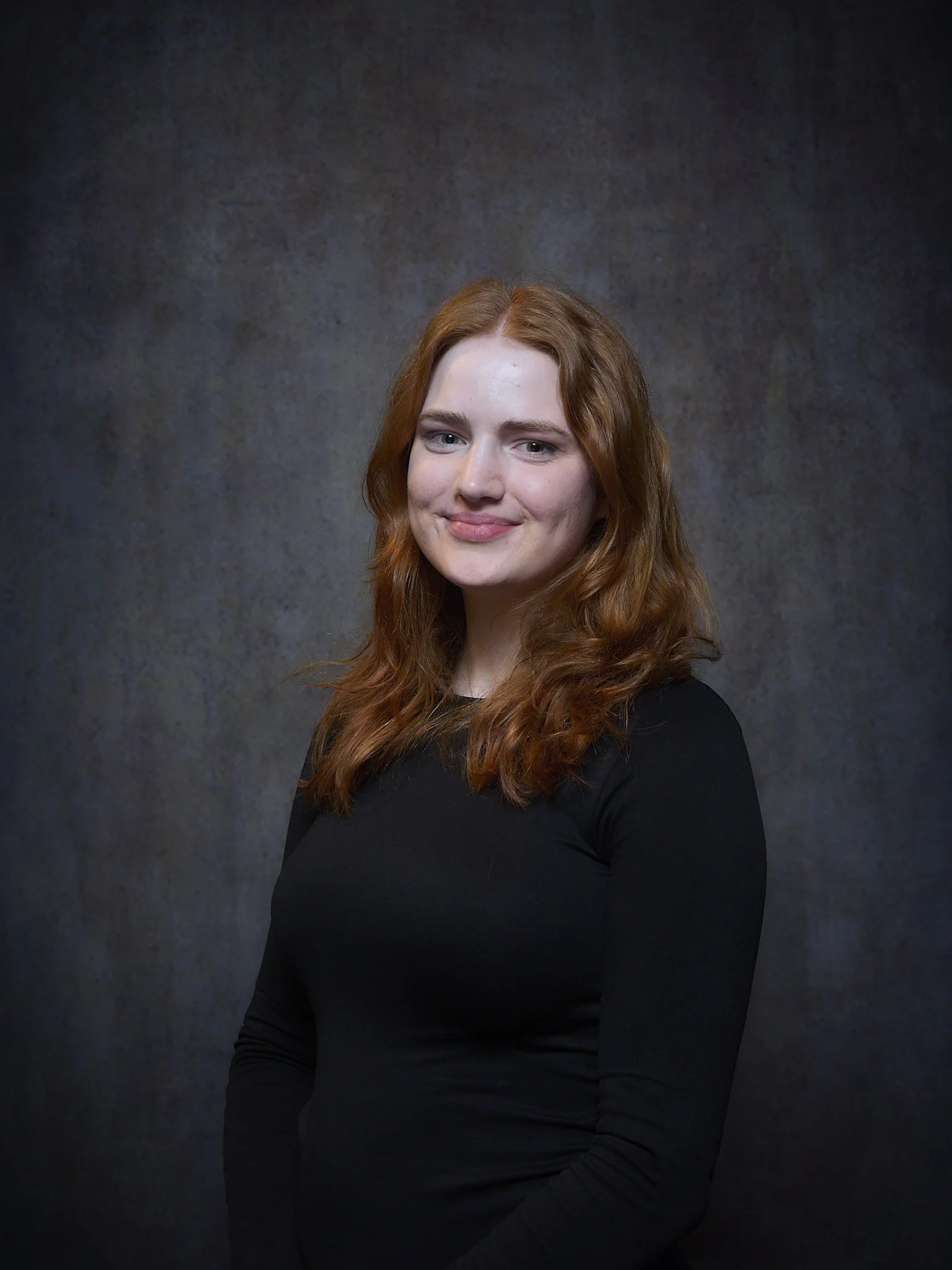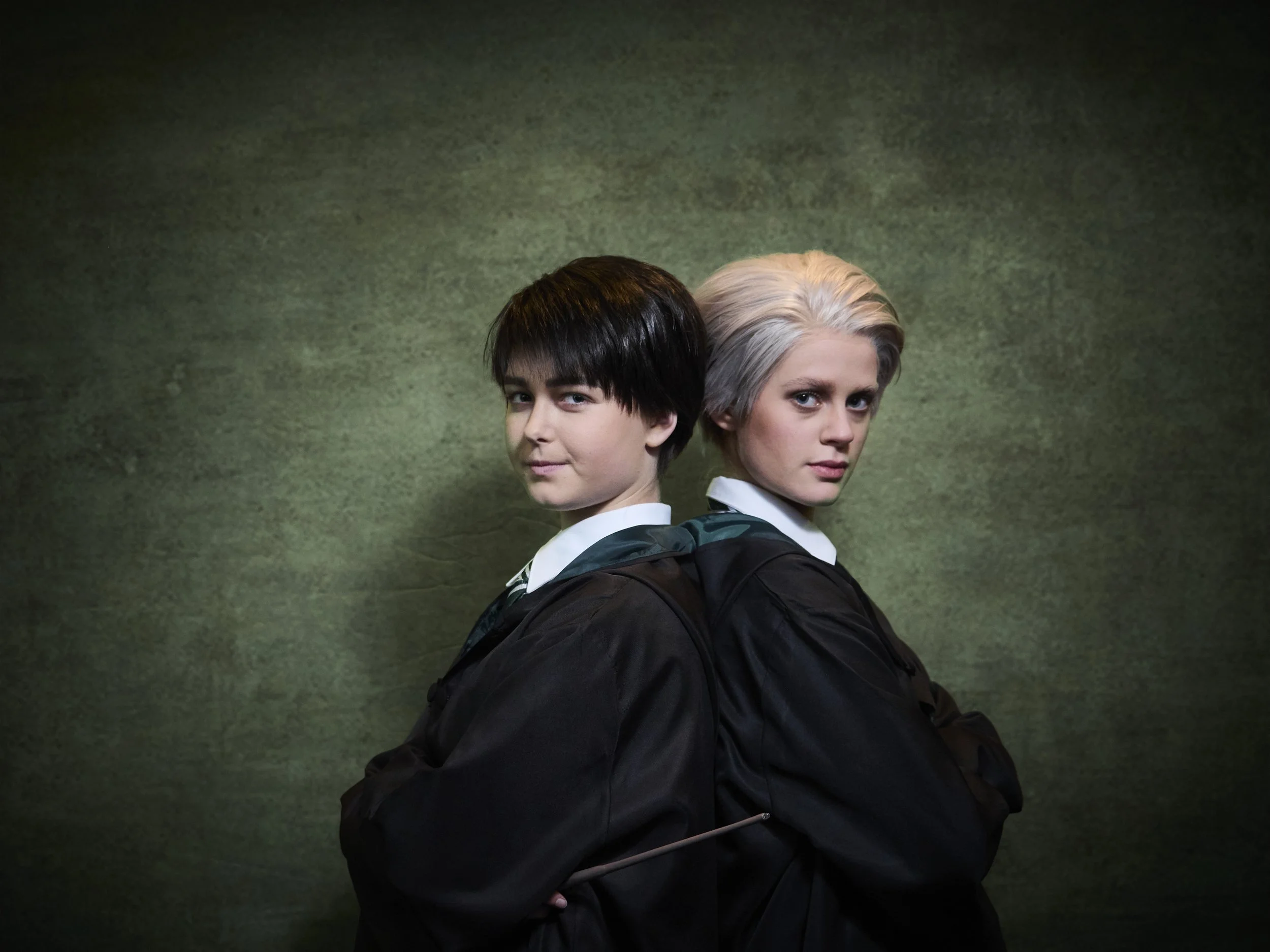I did a job last night that allowed me to reunite with a friend, an ex student at the school I work with and try some studio techniques, limited though they were.
For consistency, I shot the cast of the pending school musical the same way.
A single strobe into a silver reversed Westcott brolly, the Manfrotto Walnut/Pewter collapsible background (Walnut side) for a background.
The 45/45 angle is safe, but a little moody for these, so I went slightly more straight on and for some subjects, it was magic. Bright, clean, colourful and ideal for small programme shots.
A mild hair light was added from a window catching some reflected sunset warmth.
For some though it washed out features and failed to “sing”.
I would then try a stronger angle and sat a white brolly to the side for some fill, but it was harsh.
Charlotte is an ex student and wardrobe coordinator for the show. We had a little time, so we used it to finesse her image and as crew, she could use an image that did not match the cast shots.
I ditched my first attempt at Charlottes portrait, because the lighting above washed her out so badly it did not make it past first review.
I felt the image above was fine, but not ideal for her. The background excited me, but the shadows were too harsh. More fill, a hair light or becasue I did not have anything at hand, change the main light angle.
When limited to a single light and a makeshift (weak) reflector, there are only a few options available.
“Butterfly” also called “Hollywood” light, uses a single light directly overhead (slightly above and forward), a reflector is then used to bounce some light back up to fill shadows.
My reflector, a hand held white brolly was a little hopeful, but better than nothing. When the subject has fair skin, but strong facial features, Butterfly lighting is a good option. The slight blue shift I applied to the background manages to highlight her brilliant red hair without overpowering her complexion.
The reality is, you only have to shift your light a little bit to get a strong range of effects.
So, back to the heading.
Most of my portrait work is done with a portable studio rig that consist of 1-2 basic $100 strobes (YN 560 IV or Godox 685 which are plenty strong enough), a flash controller, 1-2 flash brackets, 2-3 stands, a Westcott silver 42” brolly, a pair of white shoot-throughs and sometimes a 110cm reflector. I also take a sheet of diffusion cloth to soften light further. Most of this fits into a single Neewer “golf” style bag.
The kit I use most often including bag probably comes in at $400au.
This gives me a main light, a hair or fill and a reflected source.
My background is either what ever I find, something hanging or a Manfrotto black/grey or Walnut/Pewter collapsible background requiring a stand and magnetic support arm. The colour is irrelevant, but the texture is not.
The Walnut background has a great texture, the colour can be changed as easily as applying white balance changes to a background mask.
Cameras are usually an Olympus of some type (I seem to have disproportionately good luck with EM10’s), sometimes a Panasonic G9, lenses range from 12-40 f2.8, 12-60 Leica, 45, 75 or 25 Oly primes. I am yet to try the S5’s as so far I have not needed to. The controlled environment of studio photography really suits M43. Lenses do not have to be super wide aperture or exotic, just smooth-sharp that render pleasantly. My 45 is a favourite, but the 12-40 gets the bulk of the work.
If I have the luxury of time and space, I would set up several lights with their own flash each for a large soft box and larger 72” brolly and switch between them as needed.
If you want super soft, it can be as simple as bouncing a flash onto a surface then through diffusion, called book light.
The big 72” brolly can even be used directly behind you, creating a light similar to a ring light, but without the odd eye reflections.



